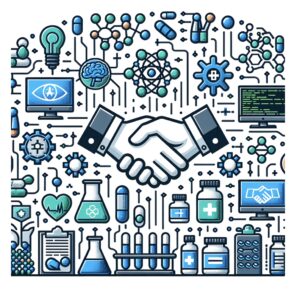Case Study:
Patient Identification for Faster Treatment
Patient Identification for Faster Treatment
Sometimes conditions that are not rare diseases still offer the same types of challenges in some situations. Sometimes finding the patients can be like finding a needle in a haystack. This product was in oncology but offered the same challenges as a rare disease drug in terms of finding the patients.
The Client Problem
• Had a 3rd Line Cancer product and many patients died at 2L so the 3L patients were rare and difficult to find
• Turned to Eularis to see if AI could identify and recruit more patients
The Solution
• Use big data (EHR and claims) and AI to:
◦ Identify and examine all previous 3L patients to predict what it was that increased probability of a patient reaching 3L+
◦ Identify the 2L patients who had the greatest probability of progressing
◦ Identify who their physicians were
◦ Created a visualization of all potential patient locations and could pull up doctor ID and other data on physician to allow the sales reps to prioritize who they saw
The Outcome
• Identified all possible 3L patients found in the EHR
• Were able to notify rep about the patient and physician even before they knew the patient would be 3L
• Were able to ensure that the physician was ready for the patients when they did progress and was aware of the benefits of the client drug for those situations where it was clinical appropriate
To achieve these kinds of results, contact Eularis today.

Latest News
Read our latest blogs here.

AI and Diversity & Inclusion: Building Equitable Technology for All
Quietly, every day, in boardrooms across Silicon Valley to Singapore, a new wave of artificial intelligence systems are making thousands of decisions that shape our lives

How Pharma Companies Can Build Trustworthy AI Agents
In an industry where a single miscalculation can impact millions of lives, pharmaceutical companies are witnessing an unprecedented transformation through AI agents – autonomous systems

The Regulatory Paradox: Vibe Coding Medical Tools in a Compliance-Heavy Industry
Healthcare innovation is now at a crossroads, where the pursuit to make revolutionary strides forward is matched only by the challenge of making tools that
